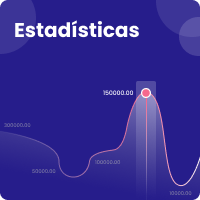El derecho informático en la industria cubana de software. el caso de la Universidad de las Ciencias Informáticas
DOI:
https://doi.org/10.21615/cesder.10.1.5Resumen
La Universidad de las Ciencias Informáticas (UCI) ejecuta anualmente como
promedio más de 100 proyectos informáticos. Con la ejecución de estos, la
actividad legal adquiere una importancia vital, por cuanto sirve de soporte a
los procesos de negociación, ejecución y cierre de los mismos. El desarrollo
de los mencionados proyectos, obliga a contar con una adecuada gestión
legal para el cumplimiento del régimen jurídico establecido en el país. En
el presente artículo, se revisa la doctrina jurídica existente y los postulados
técnicos sobre el tratamiento a los aspectos jurídicos en relación al software;
en el marco de la gestión de los aspectos legales en los proyectos de
desarrollo de software en el área de la gestión de la integración.
Descargas
Referencias bibliográficas
Aprahamian, I., Nunes, P. & Forlenza, O. (2013). Cognitive impairment and dementia in late-life bipolar disorder . Curr Opin Psychiatry ,26 (1), 120–123. http://www.ncbi.nlm.nih.gov/pubmed/?term=Cognitive+impairment+and+dementia+in+late-life+bipolar+disorder+.+Curr+Opin+Psychiatry+%2C26
Ardila, A., Rosselli, M. & Puente P. (1994). Neuropsychological evaluation of the spanish speaker. New York: Plenum Press.
Arts, B., Jabben, N., Krabbendam, L. & Van Os, J. (2008). Meta-analyses of cognitive functioning in euthymic bipolar patients and their first degree relatives. Psychological Medicine, 38, 771–85. http://www.ncbi.nlm.nih.gov/pubmed/?term=Arts%2C+B.%2C+Jabben%2C+N.%2C+Krabbendam%2C+L.+%26+Van+Os%2C+J.+(2008).+Meta-analyses+of+cognitive+functioning+in+euthymic+bipolar+patients+and+their
Benedetti, F. & Bollettini, I. (2014). Recent Findings on the Role of White Matter Pathology in Bipolar Disorder. Harvard review of psychiatry, 22 (6), 338-341. http://www.ncbi.nlm.nih.gov/pubmed/?term=Benedetti%2C+F.+%26+Bollettini%2C+I.+(2014).+Recent+Findings+on+the+Role+of+White+Matter+Pathology+in+Bipolar+Disorder
Benton, A. & Hamsher, K. (1989). Multilingual Aphasia Examination. Iowa: AJA Associates.
Budde, M. & Schulze, T . (2014). Neurocognitive Correlates of the Course of Bipolar Disorder . Harvard review of psychiatry, 22 (6 ):342-347. http://www.ncbi.nlm.nih.gov/pubmed/?term=Budde%2C+M.+%26+Schulze%2C+T+.+(2014).+Neurocognitive+Correlates+of+the+Course+of+Bipolar+Disorder+.+Harvard+review+of+psychiatry
Chen,C., Suckling, J., Lennox, B., Ooi, C, & Bullmore, E. (2011). A quantitative meta-analysis of fMRI studies in bipolar disorder. Bipolar Disorders,13 (1), 1–15. http://www.ncbi.nlm.nih.gov/pubmed/?term=Chen%2CC.%2C+Suckling%2C+J.%2C+Lennox%2C+B.%2C+Ooi%2C+C%2C+%26+Bullmore%2C+E.+(2011).+A+quantitative+meta-analysis+of+fMRI+studies+in+bipolar+disorder.+Bipolar+Disorders
Cherie, L. & Paradiso, S. (2004). Cognitive and neurological impairment in mood disorders. Psychiatr Clin North Am, 27 (1), 1-17. http://www.ncbi.nlm.nih.gov/pubmed/?term=Cherie%2C+L.+%26+Paradiso%2C+S.+(2004).+Cognitive+and+neurological+impairment+in+mood+disorders.+Psychiatr+Clin+North+Am
Clark, L. & Sahakian, BJ. (2008).Cognitive neuroscience and brain imaging in bipolar disorder. Dialogues in Clinical Neuroscience, 10 (2), 153-163. http://www.ncbi.nlm.nih.gov/pubmed/?term=Clark%2C+L.+%26+Sahakian%2C+BJ.+(2008).Cognitive+neuroscience+and+brain+imaging+in+bipolar+disorder.+Dialogues+in+Clinical+Neuroscience
Colarusso, R. & Hamill, D.(1980). Test de percepción visual no motriz. Buenos Aires: Panamericana.
Da Silva, J. & Ladinska, E. (2013). Affective disorders and risk of developing dementia: systematic review. The British Journal of Psychiatry, 202, 177–186. http://www.ncbi.nlm.nih.gov/pubmed/?term=Da+Silva%2C+J.+%26+Ladinska%2C+E.+(2013).+Affective+disorders+and+risk+of+developing+dementia%3A+systematic+review.+The+British+Journal+of+Psychiatry%2C
Delaloye, C., de Bilbao, F., Moy, G., Baudois, S., Weber, K., Campos, L & Gold, G. (2009). Neuroanatomical and Neuropsychological Features of Euthymic Patients with Bipolar Disorder. Am J Geriatr Psychiatry, 17, 1012–1021. http://www.ncbi.nlm.nih.gov/pubmed/20104058
Daban, C., Martinez-Aran, A. & Torrent C, Tabarés-Seisdedos, Balanzá-Martínez, Salazar-Fraile, Selva-Vera & Vieta. (2006). Specificity of cognitive deficits in bipolar disorder versus schizophrenia: a systematic review. Psychotherapy and Psychosomatics, 75 (2), 72–84. http://www.ncbi.nlm.nih.gov/pubmed/?term=Daban%2C+C.%2C+Martinez-Aran%2C+A.+%26+Torrent+C.+(2006).+Specificity+of+cognitive+deficits+in+bipolar+disorder+versus+schizophrenia%3A+a+systematic+review
Forlenza, O. & Aprahamian, I. (2013). Cognitive impairment and dementia in bipolar disorder. Frontiers in bioscience, 5 (1), 258-265. http://www.ncbi.nlm.nih.gov/pubmed/23276987
Ferrier, I.N., Stanton, B.R., Kelly, T.P. & Scott, J. (1999). Neuropsychological function in euthymic patients with bipolar disorder. The British Journal of Psychiatry, 175, 246–51. http://www.ncbi.nlm.nih.gov/pubmed/?term=Ferrier%2C+I.N.%2C+Stanton%2C+B.R.%2C+Kelly%2C+T.P.+%26+Scott%2C+J.+(1999).+Neuropsychological+function+in+euthymic+patients+with+bipolar+disorder.
Folstein, M.F., Folstein, S.E. & McHugh, P.R. (1975). A practical method for grading the cognitive state of patients for the clinician. Journal of Psychiatry, 12, 189-98.
Goldberg, J. & Chengappa K. (2009). Identifying and treating cognitive impairment in bipolar disorder. Bipolar Disorders, 11 (2), 123–137. http://www.ncbi.nlm.nih.gov/pubmed/?term=Goldberg+Identifying+and+treating+cognitive+impairment+in+bipolar+disorder.+Bipolar+Disorders
Golden C. (1994). Stroop Test de Colores y Palabras. Manual. Madrid: Publicaciones de psicología aplicada.
Goodglass H. & Kaplan, E. (1972). The assessment of aphasia and related disorders. Philadelphia: LEA.
Javadapour, A., Malhi, GS., Ivanovski, B., Chen, X., Wen,W. & Sachdev, P. (2010). Hippocampal volumes in adults with bipolar disorder. The Journal of Neuropsychiatry and Clinical Neurosciences, 22, 55–62. http://www.ncbi.nlm.nih.gov/pubmed/?term=Javadapour%2C+A.%2C+Malhi%2C+GS.%2C+Ivanovski%2C+B.%2C+Chen%2C+X.%2C+Wen%2CW.+%26+Sachdev%2C+P.+(2010).+Hippocampal+volumes+in+adults+with+bipolar+disorder.+The+Journal+of+Neuropsychiatry+and+Clinical+Neurosciences
Keener, M. & Phillips, M. (2007). Neuroimaging in Bipolar Disorder: A Critical Review of Current Findings. Curr Psychiatry, 9 (6), 512–520. http://www.ncbi.nlm.nih.gov/pubmed/?term=Keener%2C+M.+%26+Phillips%2C+M.+(2007).+Neuroimaging+in+Bipolar+Disorder%3A+A+Critical+Review+of+Current+Findings
Keefe, R., Poe, M., Walker, T., Kang, J. & Harvey P. ( 2006). The schizophrenia cognition rating scale: an interview-based assessment and its relationship to cognition, real-world functioning, and functional capacity. American Journal of Psychiatry, 163 (3), 426–432. http://www.ncbi.nlm.nih.gov/pubmed/16513863
Kessing, L. & Nilsson, F. (2003). Increased risk of developing dementia in patients with major affective disorders compared to patients with other medical illnesses. Journal of Affective Disorders, 73 (3), 261–269. http://www.ncbi.nlm.nih.gov/pubmed/?term=Kessing%2C+L.+%26+Nilsson%2C+F.+(2003).+Increased+risk+of+developing+dementia+in+patients+with+major+affective+disorders+compared+to+patients+with+other+medical+illnesses
Kohn, R., Levav, I., Caldas de Almeida, J., Vicente, B., Andrade, L., Caraveo-Anduaga, J. & Saxena, S. (2005). Los trastornos mentales en América Latina y el Caribe: Asunto Prioritario Para La Salud Pública. Rev Panam Salud Publica, 18 (4/5), 229-240. http://www.scielosp.org/scielo.php?script=sci_arttext&pid=S1020-49892005000900002
Kurtz, MM. & Gerraty RT. (2009). A meta-analytic investigation of neurocognitive deficits in bipolar illness: profile and effects of clinical state. Neuropsychology, 23, 551–62. http://www.ncbi.nlm.nih.gov/pubmed/?term=Kurtz%2C+MM.+%26+Gerraty+RT.+(2009).+A+meta-analytic+investigation+of+neurocognitive+deficits+in+bipolar+illness%3A+profile+and+effects+of+clinical+state.+Neuropsychology
Lopes, R. & Fernandez, L. (2012). Bipolar Disorder: Clinical Perspectives and Implications with Cognitive Dysfunction and Dementia .Depression Research and Treatment, 10, 1-11. http://www.ncbi.nlm.nih.gov/pubmed/?term=Lopes%2C+R.+%26+Fernandez%2C+L.+(2012).+Bipolar+Disorder%3A+Clinical+Perspectives+and+Implications+with+Cognitive+Dysfunction+and+Dementia+.Depression+Research+and+Treatment
Merikangas, KR., Akiskal, HS., Angst, J., Greenberg, PE., Hirschfeld, RM., Petukhova, M. & Kessler, RC. (2007). Lifetime and 12-month prevalence of bipolar spectrum disorder in the National Comorbidity Survey replication. Archives of General Psychiatry, 64 (5), 543-552. http://www.ncbi.nlm.nih.gov/pubmed/?term=Merikangas%2C+Lifetime+and+12-month+prevalence+of+bipolar+spectrum+disorder+in+the+National+Comorbidity+Survey+replication.
O’Brien, J. (2005). Dementia associated with psychiatric disorders. International Psychogeriatrics, 17, 207–221. http://www.ncbi.nlm.nih.gov/pubmed/?term=O%E2%80%99Brien%2C+J.+(2005).+Dementia+associated+with+psychiatric+disorders.+International+Psychogeriatrics
Osterrieth, P. (1994). Le test de copie d´une figure complexe. Archives des Psychologie, 30, 206-56.
Osuji, I, & Cullum, C.(2005). Cognition in bipolar disorder. Psychiatric Clinics of North America, 28 (2),427-441. http://www.ncbi.nlm.nih.gov/pubmed/?term=Osuji%2C+I%2C+%26+Cullum%2C+C.(2005).+Cognition+in+bipolar+disorder.+Psychiatric+Clinics+of+North
Pavlovic, A., Marley, J. & Sivakumar, V. (2011). Development of frontotemporal dementia in a case of bipolar affective disorder: is there a link? BMJ Case Reports; doi:10.1136/bcr.09.2010.3303. http://www.ncbi.nlm.nih.gov/pubmed/?term=Development+of+frontotemporal+dementia+in+a+case+of+bipolar+affective+disorder%3A+is+there+a+link
Peters, A., Peckham, A ., Stange, J., Sylvia, L., Hansen, N., Salcedo, S…. & Deckersbach,T.( 2014) .Correlates of Real World Executive Dysfunction in Bipolar I Disorder . J Psychiatr Res, 53, 87–93. http://www.ncbi.nlm.nih.gov/pubmed/?term=Peters%2C+A.%2C+Peckham%2C+A+.%2C+Stange%2C+J.%2C+Sylvia%2C+L.%2C+Hansen%2C+N.%2C+Salcedo%2C+S%E2%80%A6.+%26+Deckersbach%2CT.(+2014)+.Correlates+of+Real+World+Executive+Dysfunction+in+Bipolar+I+Disorder
Posada, J., Aguilar, S., Magaña, C. & Gomez, L. (2004). Prevalencia de trastornos mentales
y uso de servicios: resultados preliminares del Estudio nacional de salud mental. Colombia. Revista Colombiana de Psiquiatría, 33 (3), 241-262. http://www.scielo.org.co/scielo.php?script=sci_arttext&pid=S0034-74502004000300002
Raitan, RM. (1956). Trail Making Test. Manual for administration, scoring and interpretation. Indianapolis: Indiana University Press.
Robinson, L., Thompson, J., Gallagher, P., Goswami, U., Young, AH., Ferrier, IN. & Moore, PB. (2006). A meta-analysis of cognitive deficits in euthymic patients with bipolar disorder. Journal of Affective Disorders, 93, 105–15. http://www.ncbi.nlm.nih.gov/pubmed/16677713
Sierra, P., Livianos, L. & Rojo L. (2005). Quality of life for patients with bipolar disorder: relationship with clinical and demographic variables. Bipolar Disorders, 7 (2), 159- 165. http://www.ncbi.nlm.nih.gov/pubmed/?term=Sierra%2C+P.%2C+Livianos%2C+L.+%26+Rojo+L.+(2005).+Quality+of+life+for+patients+with+bipolar+disorder%3A+relationship+with+clinical+and+demographic+variables.+Bipolar+Disorders
Spreen, O. & Strauss, EA. (1991). Compendium of neuropsychological test: administration, norms and commentary. New York: Oxford University Press.
Strakowski, S., DelBello, S. & Adler, C. (2005).The functional neuroanatomy of bipolar disorder: a review of neuroimaging findings. Molecular Psychiatry, 10, 105–116. http://www.ncbi.nlm.nih.gov/pubmed/15340357
Strejilevich ,S., Samamé ,C. & Martino, D. (2015). The trajectory of neuropsychological dysfunctions in bipolar disorders: A critical examination of a hypothesis. Journal of Affective Disorders, 175, 396–402. http://www.ncbi.nlm.nih.gov/pubmed/?term=Strejilevich+%2CS.%2C+Samam%C3%A9+%2CC.+%26+Martino%2C+D.+(2015).+The+trajectory+of+neuropsychological+dysfunctions+in+bipolar+disorders
Torralva. T., Roca, M., Gleichgerrcht, E., López, P. & Manes, F. (2009). INECO Frontal Screening (IFS): a brief, sensitive, and specific tool to assess executive functions in dementia. Journal International Neuropsychology Society, 15, 777-786. http://www.ncbi.nlm.nih.gov/pubmed/?term=Torralva.+T.%2C+Roca%2C+M.%2C+Gleichgerrcht%2C+E.%2C+L%C3%B3pez%2C+P.+%26+Manes%2C+F.+(2009).+INECO+Frontal+Screening+(IFS)%3A+a+brief%2C+sensitive%2C+and+specific+tool+to+assess
Torralva, T., Gleichgerrcht, E., Torrente, F., Roca, M., Strejjilevich, S., Cetkovich, M., Lischinsky, A. & Manes F. (2011). Neuropsychological functioning in adult bipolar disorder and ADHD patients: A comparative study. Psychiatric Research, 186, 261-266. http://www.ncbi.nlm.nih.gov/pubmed/?term=Manes+F.++(2011).+Neuropsychological+functioning+in+adult+bipolar+disorder+and+ADHD+patients%3A+A+comparative+study.+Psychiatric+Research
Young, R.C., Murphy, C.F., Heo, M., Schulberg, H.C. & Alexopoulos, G.S. (2006). Cognitive impairment in bipolar disorder in old age: Literature review and findings in manic patients. Journal of Affective Disorders, 92, 125–131. http://www.ncbi.nlm.nih.gov/pubmed/?term=Cognitive+impairment+in+bipolar+disorder+in+old+age%3A+Literature+review+and+findings+in+manic+patients.+Journal+of+Affective+Disorders
Descargas
Publicado
Cómo citar
Número
Sección
Licencia

Esta obra está bajo una licencia internacional Creative Commons Atribución-NoComercial-CompartirIgual 4.0.
| Estadísticas de artículo | |
|---|---|
| Vistas de resúmenes | |
| Vistas de PDF | |
| Descargas de PDF | |
| Vistas de HTML | |
| Otras vistas | |




